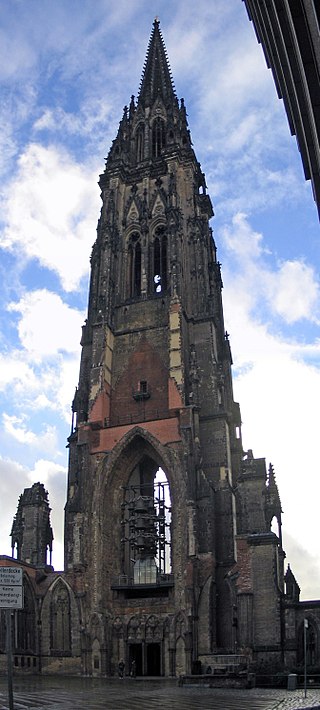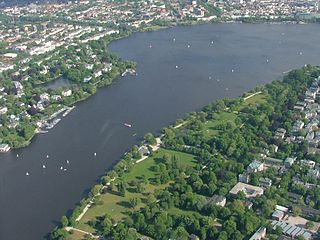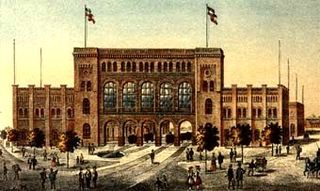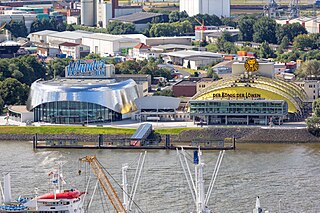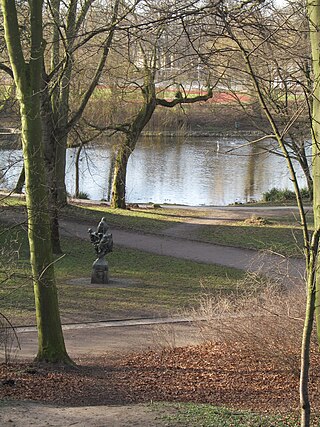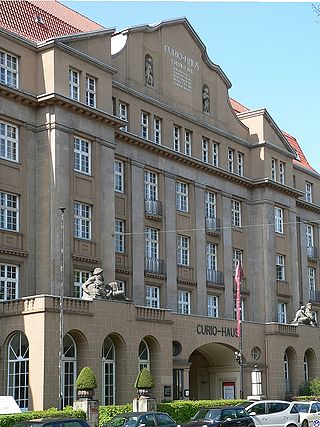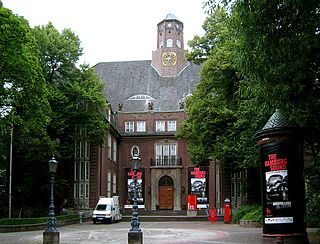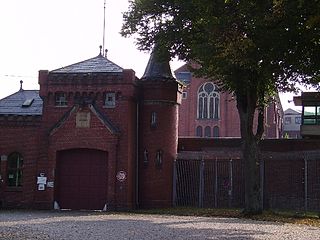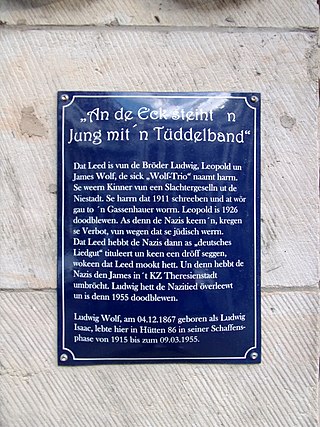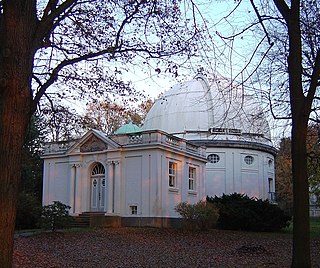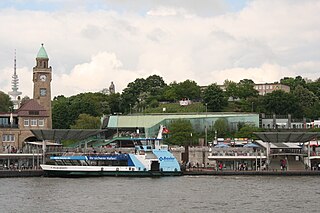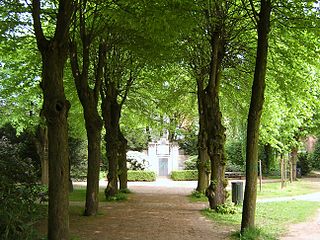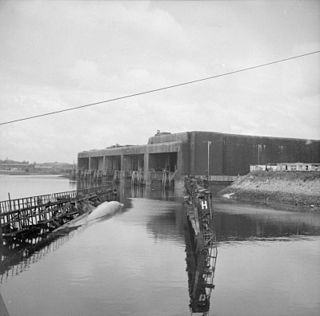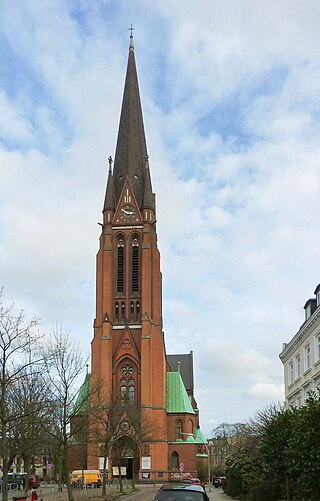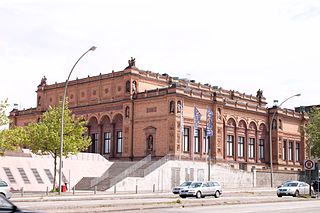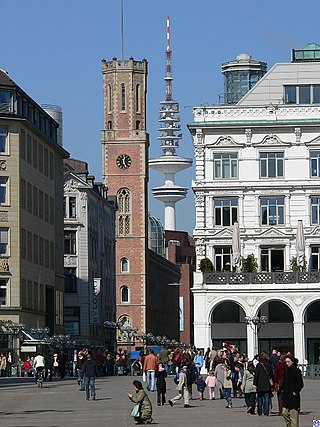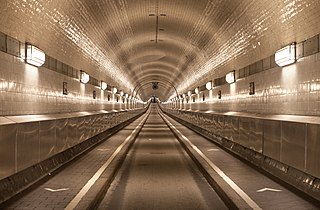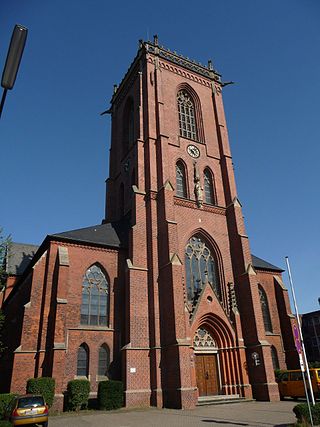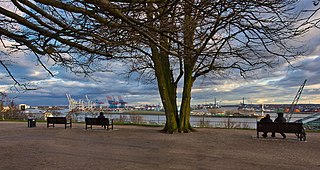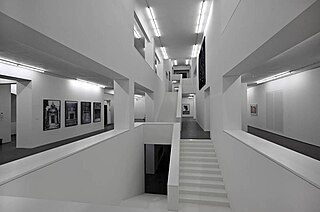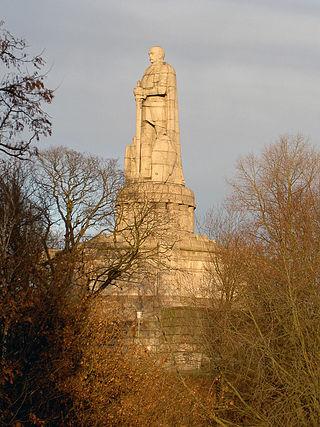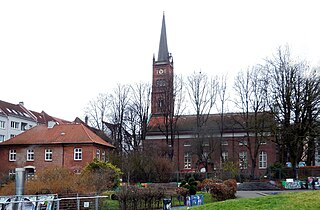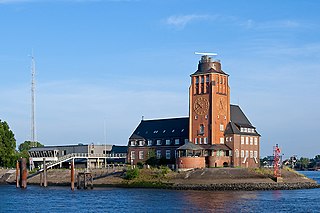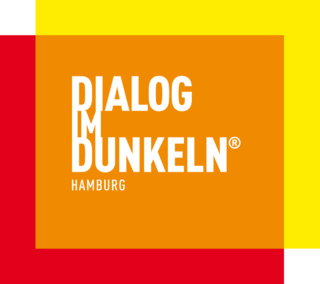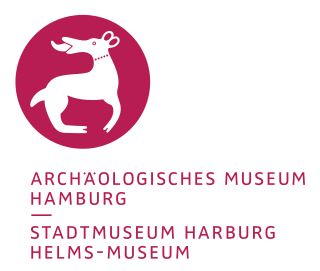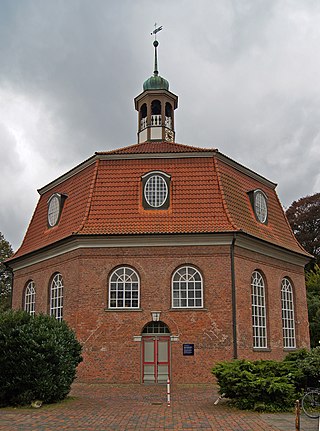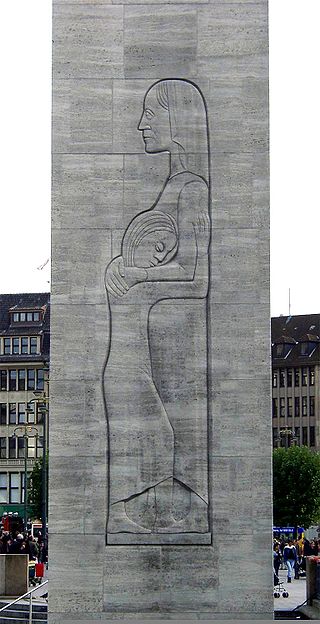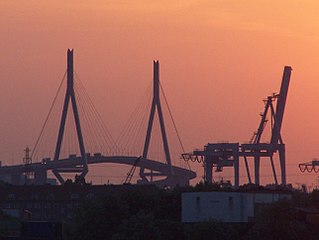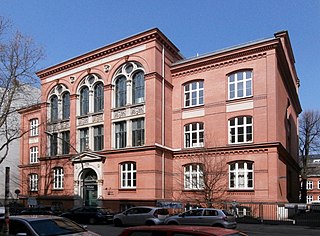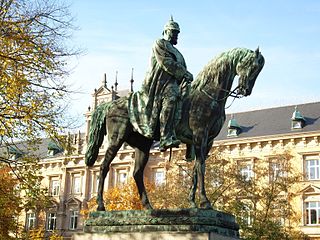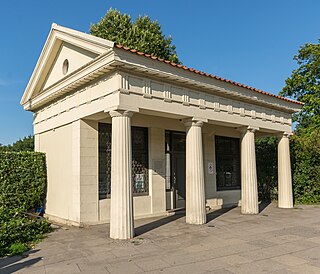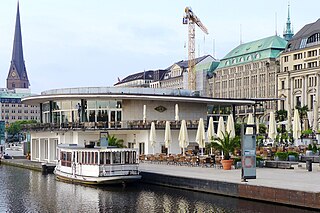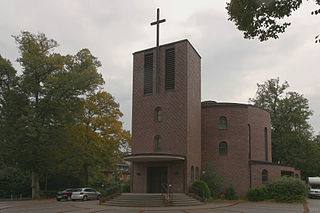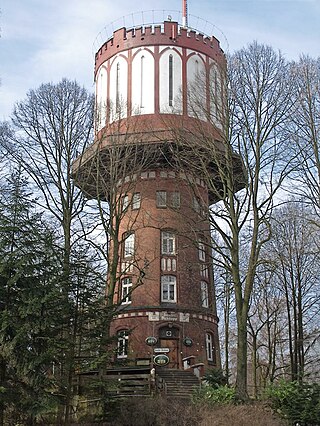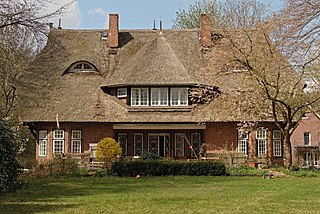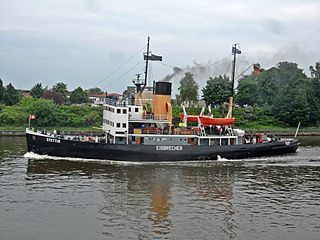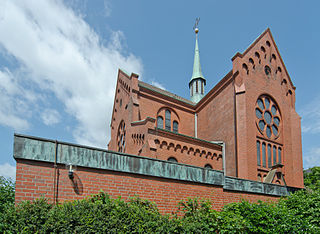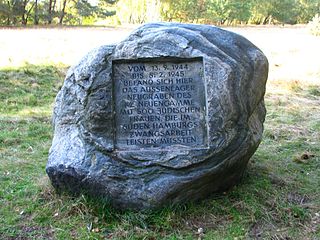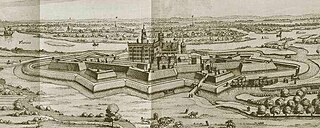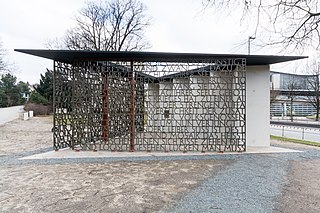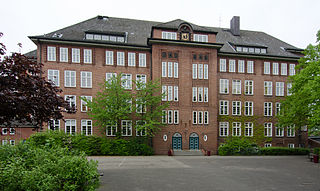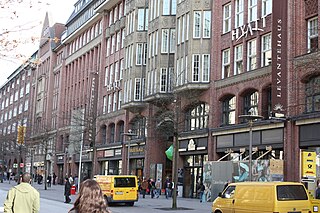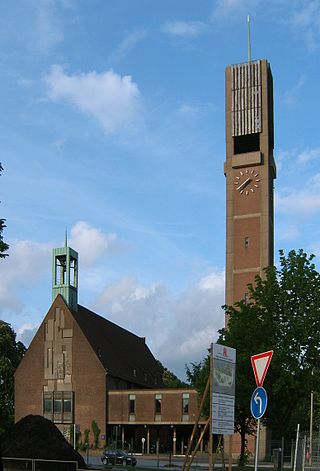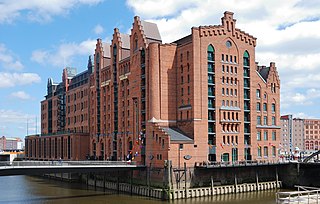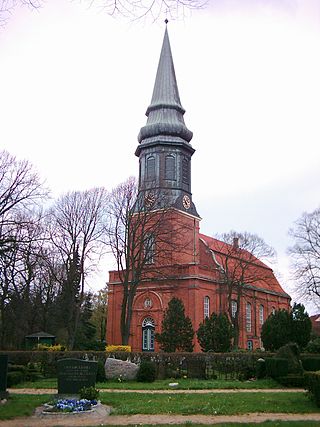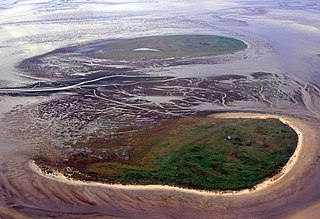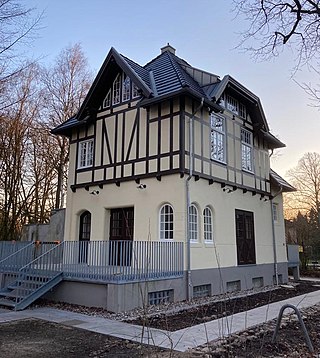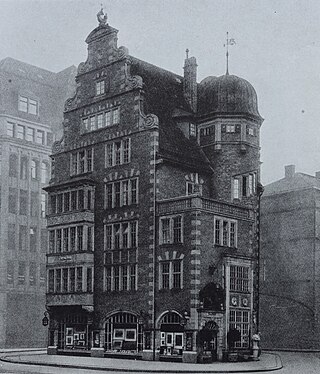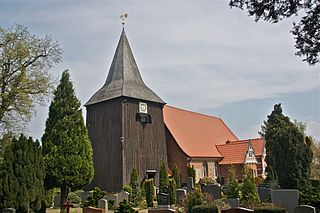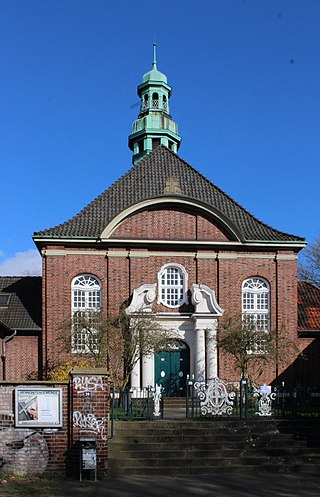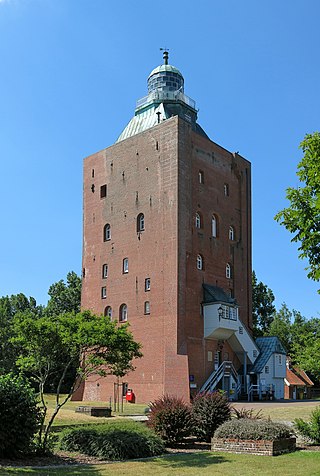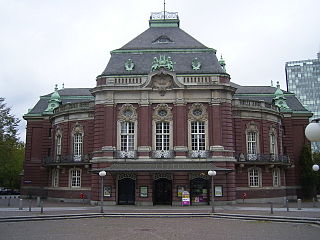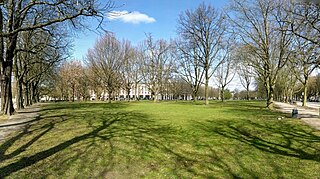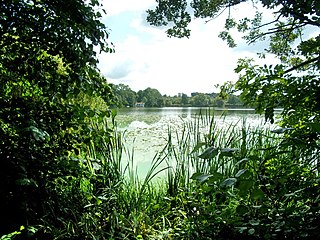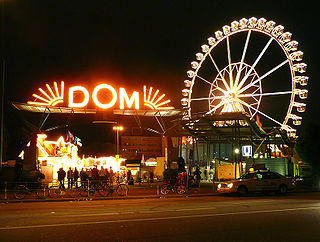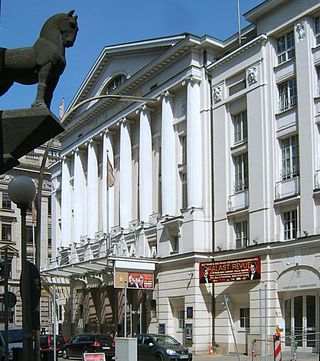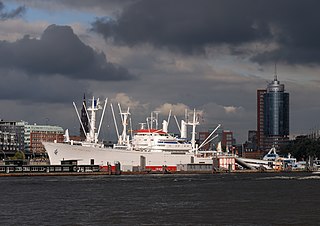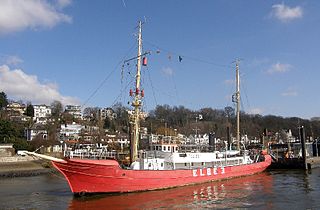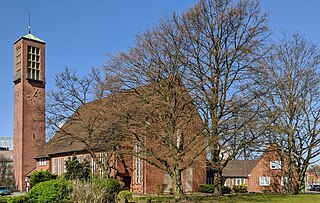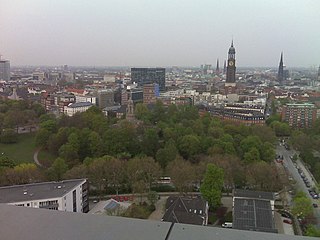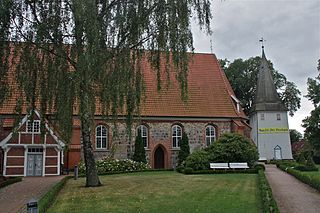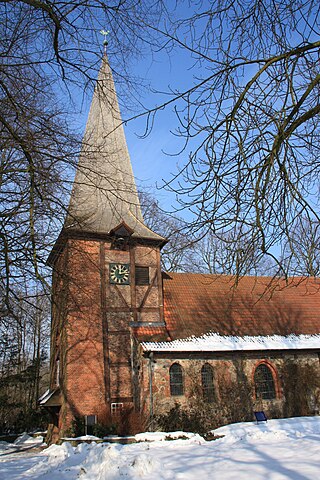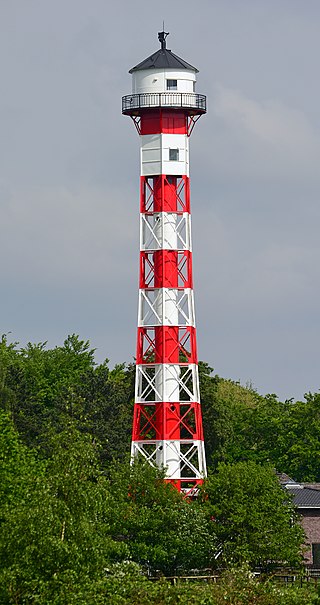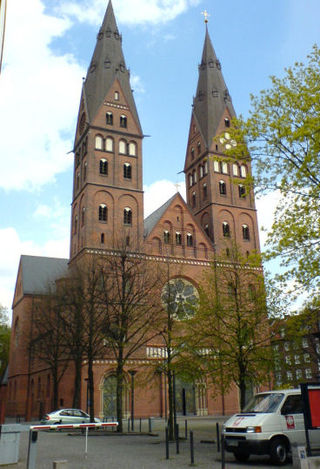100 Sights in Hamburg, Germany (with Map and Images)
Legend
Premium Sights
Book tickets, guided tours and activities in Hamburg.
Guided Free Walking Tours
Book free guided walking tours in Hamburg.
Welcome to your journey through the most beautiful sights in Hamburg, Germany! Whether you want to discover the city's historical treasures or experience its modern highlights, you'll find everything your heart desires here. Be inspired by our selection and plan your unforgettable adventure in Hamburg. Dive into the diversity of this fascinating city and discover everything it has to offer.
Sightseeing Tours in HamburgActivities in HamburgThe Speicherstadt Museum documents the history of construction and use of the historic Speicherstadt in Hamburg. It is located in the room – on the ground floor – of the 1888 storage block L, which was built according to a design by the Hamburg architect Georg Thielen in the neo-Gothic style and which still has the original riveted skeleton construction made of wrought iron in the part used by the Speicherstadt Museum. The museum is conveniently located at Am Sandtorkai 36 in the vicinity of HafenCity, the Miniatur Wunderland model railway site, the Hamburg Dungeon and the Spice Museum, and is best reached via subway line 3.
Hamburg City Hall is the seat of local government of Hamburg, Germany. It is the seat of the government of Hamburg and as such, the seat of one of Germany's 16 state parliaments. The Rathaus is located in the Altstadt quarter in the city center, at the Rathausmarkt square, and near the lake Binnenalster and the central station. Constructed from 1886 to 1897, the city hall still houses its original governmental functions with the office of the First Mayor of Hamburg and the meeting rooms for the Parliament and the Senate.
3. Speicherstadt
The Speicherstadt in Hamburg, Germany, is the largest warehouse district in the world where the buildings stand on timber-pile foundations, oak logs, in this particular case. It is located in the port of Hamburg – within the HafenCity quarter – and was built from 1883 to 1927.
4. Hamburg Dungeon
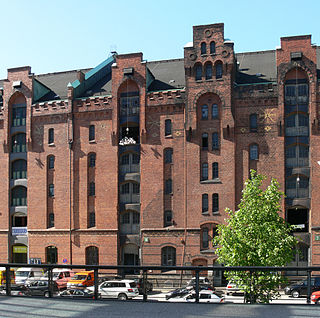
Built in 2000, the Hamburg Dungeon is a tourist attraction from a chain including the London Dungeon and Berlin Dungeon. It is the first of this brand to be built in mainland Europe. It provides a journey through Hamburg’s dark history in an actor led, interactive experience.
5. G
Dessauer Ufer was a subcamp of the Neuengamme concentration camp in Nazi Germany, located inside the Port of Hamburg on the Kleiner Grasbrook in Veddel. It was in operation from July 1944 to April 1945. Inmates were mostly used for forced labour at rubble clearing and building in the Hamburg port area.
6. Wappen FC St. Pauli
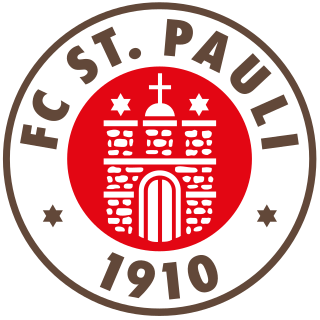
Fußball-Club St. Pauli von 1910 e.V., commonly known as simply FC St. Pauli, is a German professional football club based in the St. Pauli district of Hamburg. The team is competing in the Bundesliga in the 2024–25 season following promotion.
7. KZ-Gedenkstätte Neuengamme
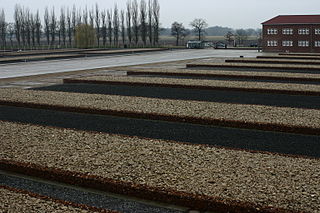
The Neuengamme Concentration Camp Memorial commemorates the more than 100,000 victims of National Socialism who were imprisoned here between 1938 and 1945 and of whom 50,000 died on the site of the former Neuengamme concentration camp in Hamburg.
8. Villa Laeisz
The Harvestehuder Weg is a street in the Hamburg district of Eimsbüttel, which runs along the foreshore of the Outer Alster from the Alte Rabenstraße to the Klosterstern over a length of two kilometers through the districts of Rotherbaum and Harvestehude. With numerous free-standing villas from the late 19th and early 20th centuries, in the middle of large, partly park-like gardens, it is considered a boulevard of the Hanseatic city and, along with the Elbchaussee, a testimony to the wealth of Hamburg's merchants and entrepreneurs during the Wilhelminian period.
9. Gedenkstein an die Abschiebung von 800 Juden
Hamburg's memorials to the victims of National Socialism include a large number of monuments, memorials, facilities, plaque programmes and institutional facilities that commemorate the victims of National Socialism and the destruction of the war. In their entirety, they can be understood as "city memory" for the period from 1933 to 1945. Since the collapse of National Socialist rule, more than 150 memorials have been established in Hamburg. The first was inaugurated during a memorial event at the Ohlsdorf cemetery at the end of October/beginning of November 1945, it was the urn of the unknown concentration from the Auschwitz extermination camp. 15,000 people took part in the funeral service. This first urn became part of the Memorial to the Victims of National Socialist Persecution in 1949, a stele with 105 vessels containing the ashes of victims and soil from 25 concentration camps.
Wikipedia: Hamburger_Gedenkstätten_für_die_Opfer_des_Nationalsozialismus (DE)
10. Evangelische Freikirche Torstraße
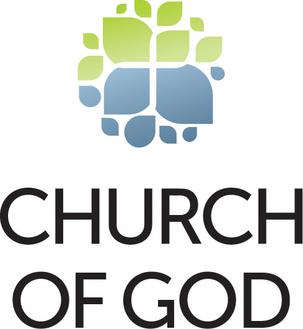
The Church of God , also called the Church of God Ministries, is an international holiness Christian denomination with roots in Wesleyan-Arminianism and also in the restorationist traditions. The organization grew out of the evangelistic efforts of several Holiness evangelists in Indiana and Michigan in the early 1880s, most notably Daniel Sidney Warner.
11. Hamburg Hauptbahnhof
Hamburg Hauptbahnhof, or Hamburg Central Railway Station in English, is the main railway station of the city of Hamburg, Germany. Opened in 1906 to replace four separate terminal stations, today Hamburg Hauptbahnhof is operated by DB Station&Service AG. With an average of 550,000 passengers a day, it is Germany's busiest railway station and the second-busiest in Europe after the Gare du Nord in Paris. It is classed by Deutsche Bahn as a category 1 railway station.
12. Miniature Wonderland
The Miniatur Wunderland is, according to Guinness World Records, the largest model railway system in the world. It is located at the historic Speicherstadt in Hamburg and is one of the most popular and most visited sights in Germany.
Wikipedia: Miniatur Wunderland (EN), Website, Website, Youtube
13. Peking
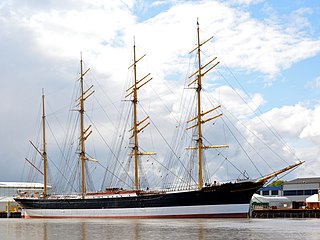
Peking is a steel-hulled four-masted barque. A so-called Flying P-Liner of the German company F. Laeisz, it was one of the last generation of cargo-carrying iron-hulled sailing ships used in the nitrate trade and wheat trade around Cape Horn.
14. [Hamburger Franzosenzeit]
In the history of Hamburg, Hamburg's French period refers to the period under French occupation and incorporation into the French Empire in the years from 1806 to 1814, parallel to the so-called French period in other German areas.
15. Bugenhagen-Denkmal
Johannes Bugenhagen, also called Doctor Pomeranus by Martin Luther, was a German theologian and Lutheran priest who introduced the Protestant Reformation in the Duchy of Pomerania and Denmark in the 16th century. Among his major accomplishments was organization of Lutheran churches in Northern Germany and Scandinavia. He has also been called the "Second Apostle of the North".
16. Kirchenruine St. Nikolai
The Church of St. Nicholas was a Gothic Revival cathedral that was formerly one of the five Lutheran Hauptkirchen in the city of Hamburg, Germany. The original chapel, a wooden building, was completed in 1195. It was replaced by a brick church in the 14th century, which was eventually destroyed by fire in 1842. The church was completely rebuilt by 1874, and was the tallest building in the world from 1874 to 1876. It was designed by the English architect George Gilbert Scott.
17. Alstervorland
Der Alsterpark führt entlang des Alsterufers rund um die Außenalster und schließt die Bereiche Schwanenwik, das Eduard-Rhein-Ufer und das Alstervorland mit ein. Im Süden beginnend führt der Park östlich durch die Hamburger Stadtteile St. Georg, Hohenfelde, Uhlenhorst und Winterhude, ab der Krugkoppelbrücke westlich durch das Alstervorland in Harvestehude und Rotherbaum bis zur Kennedybrücke am Übergang zur Binnenalster.
18. Christianskirche

The Christianskirche in the Hamburg district of Ottensen is a Baroque building from 1738; the congregation belongs to the church district of Hamburg-West/Südholstein of the Evangelical Lutheran Church in Northern Germany. Since 1803, the grave of the poet Friedrich Gottlieb Klopstock has been located in the churchyard, which is why the Palmaille-Elbchaussee street running south past it over a length of about 270 m was given the name Klopstockstraße in 1846 and the name Klopstockkirche has now become common for the church.
19. Info-Pavillon Hannoverscher Bahnhof
Hannoversche Bahnhof was a former terminus station in Hamburg, Germany. It was opened in 1872 and was located on the Großer Grasbrook on the site of today's Lohseplatz. Until it was replaced by Hamburg Central Station in 1906, it was the terminus for all passenger trains crossing the Elbe from the south near Hamburg.
20. Stage Theater im Hafen Hamburg
The Theater im Hafen Hamburg is a musical theatre of the Stage Entertainment Group, which opened in 1994. It is located on Hamburg's Elbe island of Steinwerder, opposite the Landungsbrücken and next to the Theater an der Elbe, which opened in 2014. Since December 2, 2001, the musical The Lion King has been performed there.
21. Hammer Park
Hammer Park is a listed public park in the district of Hamm in the east of Hamburg. In its present size and form, it was designed between 1914 and 1920 by the then Hamburg horticultural director Otto Linne. However, it goes back to an older and much larger private landscaped garden, the roots of which date back to the 17th century.
22. Keltisches Baumhoroskop
The Celtic tree horoscope is an invention in the course of neopaganism (neo-paganism), which speculatively constructs a horoscope system from original Celtic plant myths. A historical tree horoscope as a mantic practice (divination) among the Celts cannot be proven by either ancient or medieval sources on Celtic religion and customs.
23. Curio-Haus
The Curiohaus is an office and event building built as a community house in Hamburg in the district of Eimsbüttel, district of Rotherbaum. It was built between 1908 and 1911 according to a design by the architects Johann Emil Schaudt and Walther Puritz at Rothenbaumchaussee 11–17 for the Society of Friends of the Patriotic School and Education System and named after the founder of this society, Johann Carl Daniel Curio. Since 1948, it has been the property and headquarters of the Hamburg branch of the Education and Science Union (GEW). In October 1997, the building as a whole and with its fixed furnishings, the front garden pedestals, the lamps and the oval of the courtyard garden was placed under monument protection.
24. Hamburg Museum
The Museum for Hamburg History is a history museum located in the city of Hamburg in northern Germany. The museum was established in 1908 and opened at its current location in 1922, although its parent organization was founded in 1839. The museum is located near the Planten un Blomen park in the center of Hamburg. The museum is commonly reviewed among the museums of the city of Hamburg.
25. Main Church St. Nokilai
The main church of St. Nikolai was consecrated in 1962 in Hamburg-Harvestehude on Harvestehuder Weg near the Klosterstern and replaced the war-damaged former main church of St. Nikolai in the city centre, which continues to exist today as a ruin and memorial. The parish area of the new St. Nicholas Church was formed from parts of the parishes of St. Johannis (Harvestehude), St. Johannis (Hamburg-Eppendorf), Matthäusgemeinde (Winterhude) and St. Andreas (Harvestehude). The old parish area of the destroyed St. Nikolai Church was transferred to the jurisdiction of the main churches of St. Katharinen and St. Michaelis.
Wikipedia: Hauptkirche St. Nikolai (Hamburg-Harvestehude) (DE), Website
26. Bhagwan-Stein
The Fuhlsbüttel Correctional Facility, colloquially known as Santa Fu, is a correctional facility that was originally located in Hamburg-Fuhlsbüttel, but after border shifts is now in Hamburg-Ohlsdorf. As an all-male institution, it is responsible for the closed prison system and preventive detention. The deportation detention was transferred from the Fuhlsbüttel prison to the Billwerder prison; In the meantime, this is no longer enforced there.
27. Jung mit'n Tüddelband
An de Eck steiht'n Jung mit'n Tüdelband, also known under the titles An de Eck steiht'n Jung mit'n Trudelband and En echt Hamborger Jung is a Low German couplet, the history of which began in 1911 with the Wolf brothers.
28. Hamburger Sternwarte
Hamburg Observatory is an astronomical observatory located in the Bergedorf borough of the city of Hamburg in northern Germany. It is owned and operated by the University of Hamburg, Germany since 1968, although it was founded in 1825 by the City of Hamburg and moved to its present location in 1912. It has operated telescopes at Bergedorf, at two previous locations in Hamburg, at other observatories around the world, and it has also supported space missions.
29. Budge-Palais
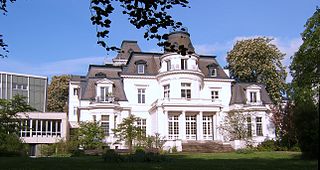
The Budge-Palais is a classicist villa building by the architect Martin Haller at Harvestehuder Weg 12, corner of Milchstraße, in the Hamburg district of Rotherbaum in the district of Eimsbüttel. It was built in 1884 as a residential building and later rebuilt several times. From 1903 it was inhabited by Henry (1840–1928) and Emma Budge (1852–1937). After a dubious purchase by the city of Hamburg, it was the seat of the Reich Governor's Office under Gauleiter Karl Kaufmann from 1938 to 1945. Since 1959, the building has been used by the Hamburg University of Music and Drama (HfMT) and has been expanded with extensions of modern architecture. In April 2011, after a restitution request, an agreement was reached with the Budge heirs, and the palace remains the property of the city.
30. Stintfang
The Stintfang is a 26-metre-high hill on the right (northern) bank of the Elbe in Hamburg, Germany. It is a remnant of the former Hamburg ramparts and an important landmark in Hamburg's cityscape due to its exposed location above the St. Pauli Landungsbrücken. The youth hostel located on the Stintfang and the viewing platform in front of it with a view of the port of Hamburg are particularly well-known.
31. Wohlers Park
The Norderreihe cemetery, or Wohlers Park because of its location on Wohlers Allee, is a former cemetery in Altona-Altstadt. It was inaugurated in 1831, and the last burial took place in 1945. It has been a listed building since 1979 and was also designated as a public park of about 4.6 hectares.
32. U-Boot-Bunker Fink II
Fink II was the code name of the U-boat bunker located on the Rüsch Canal on Finkenwerder, which was built from 1941 to 1944 on the grounds of the Deutsche Werft. It was blown up in 1945. Today the Fink II submarine bunker memorial is located there.
33. Sankt Johannis Altona
The Evangelical Lutheran Church of St. Johannis in Hamburg-Altona is a neo-Gothic church from 1873. It belongs to the parish of Altona-Ost in the church district of Hamburg-West/Südholstein of the Evangelical Lutheran Church in Northern Germany. Since 1998, its premises have also been home to the Kulturkirche Altona, a non-profit cultural organizer and landlord of the church space on behalf of the Altona-Ost parish.
34. Tierpark Hagenbeck
The Tierpark Hagenbeck is a zoo in Stellingen, Hamburg, Germany. The collection began in 1863 with animals that belonged to Carl Hagenbeck Sr. (1810–1887), a fishmonger who became an amateur animal collector. The park itself was founded by Carl Hagenbeck Jr. in 1907. It is known for being the first zoo to use open enclosures surrounded by moats, rather than barred cages, to better approximate animals' natural environments.
35. Hamburger Kunsthalle
The Hamburger Kunsthalle is the art museum of the Free and Hanseatic City of Hamburg, Germany. It is one of the largest art museums in the country. It consists of three connected buildings, dating from 1869, 1921 (Kuppelsaal) and 1997, located in the Altstadt district between the Hauptbahnhof and the two Alster lakes.
36. Alte Post
The Alte Post in Hamburg is a building completed in 1847 on Poststraße in Hamburg's Neustadt district. It was built after the Great Fire of 1842 according to plans by Alexis de Chateauneuf out of the need to combine several of the post offices represented in the city in one house. The largest administrative building in the city at the time is considered an outstanding example of Hamburg's so-called post-fire architecture and is one of the oldest post office buildings in Germany before the founding of the unified Reichspost.
37. St. Pauli Elbe Tunnel
Old Elbe Tunnel or St. Pauli Elbe Tunnel, which opened in 1911, is a pedestrian and vehicle tunnel in Hamburg. The 426 m long tunnel was a technical sensation; 24 m beneath the surface, two 6 m diameter tubes connect central Hamburg with the docks and shipyards on the south side of the river Elbe. This was a big improvement for tens of thousands of workers in one of the busiest harbors in the world.
38. Hamburgische Staatsoper
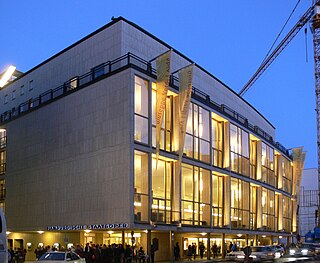
The Hamburg State Opera is a German opera company based in Hamburg. Its theatre is near the square of Gänsemarkt. Since 2015, the current Intendant of the company is Georges Delnon, and the current Generalmusikdirektor of the company is Kent Nagano.
39. St. Petri und Pauli zu Hamburg-Bergedorf
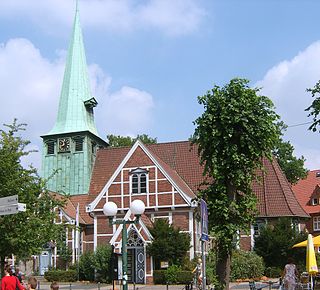
St. Petri und Pauli is an Evangelical Lutheran church in Hamburg-Bergedorf and is considered the most important historical building in the district, along with Bergedorf Castle. As the oldest church in the central town of the Vier- und Marschlande, it shows a rich artistic design.
Wikipedia: St. Petri und Pauli (Hamburg-Bergedorf) (DE), Website
40. Schellfischtunnel
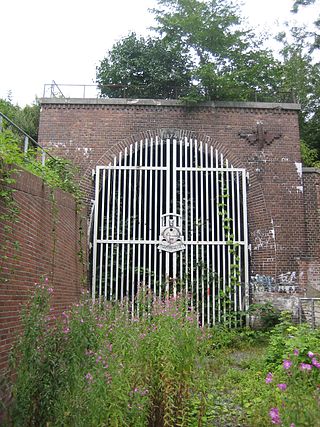
The Altona Harbour Railway Tunnel is a disused, 961 m long railway tunnel in Hamburg-Altona. It connected the easternmost track at Hamburg-Altona station with the tracks of the former Altona Harbour Railway and the Altona Fishing Harbour Railway below the Geest slope on the Elbe. It was reopened for viewings.
41. Sankt Sophien
St. Sophien is a Roman Catholic parish church in Hamburg-Barmbek-Süd, Weidestraße 53. The church, which opened in 1900, was donated by the shipowner Wilhelm Anton Riedemann. The naming may go back to the common first name "Sophie" of Riedemann's wife and their daughter; officially, the church bears the patronage of Sophia of Rome. The building is a listed building.
42. Altonaer Balkon
The Altonaer Balkon is located in Hamburg's Altona-Altstadt district in the Altona district. The green space is part of a series of Elbe parks that are located high above the Elbe on the approximately 27-metre-high geest slope and which line up like a chain in a westerly direction, starting on the Promenade Bei der Erholungs in the St. Pauli district.
43. Sammlung Falckenberg
The Falckenberg Collection is a collection of works of modern and contemporary art compiled by the lawyer and entrepreneur Harald Falckenberg (1943–2023) in Hamburg. The private collection is ranked among the "200 best in the world" by the international trade journal Artnews. Since 2011, it has been part of the Deichtorhallen Hamburg.
Wikipedia: Sammlung Falckenberg (DE), Website, Opening Hours
44. Heilige-Dreieinigkeits-Kirche
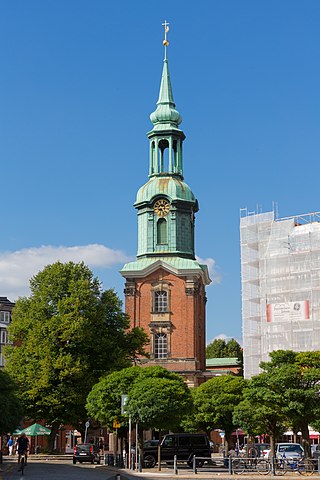
The Holy Trinity Church, often called St. George's Church, is located in Hamburg's St. Georg district not far from the Lange Reihe, very close to Hamburg's main train station and, along with the Church of the Redeemer in Borgfelde, is one of the two preaching sites of the Evangelical Lutheran parish of St. Georg-Borgfelde.
Wikipedia: Hl.-Dreieinigkeits-Kirche (Hamburg-St. Georg) (DE)
45. Bismarck-Denkmal
The Bismarck Monument in Hamburg is a memorial sculpture located in the St. Pauli quarter dedicated to Otto von Bismarck. It is one of 240 memorials to Bismarck worldwide and is the largest and probably best-known of these Bismarck towers. The monument stands near the jetties of Hamburg port on the Elbhöhe, today a local recreation area. The architect was Johann Emil Schaudt; the sculptor was Hugo Lederer.
46. Sankt Pauli Kirche
The Evangelical Lutheran Church of St. Pauli is located in the Hamburg district of Altona-Altstadt on the street Pinnasberg. Until the boundaries of the district were changed in 1938, the church belonged to the district of St. Pauli, for which it had given its name in 1833.
Wikipedia: St.-Pauli-Kirche (Hamburg-Altona-Altstadt) (DE), Website
47. Lotsenhaus Seemannshöft
The Pilot's House Seemannshöft (Pilots' Station Seemannshöft) is a brick building built in 1914 with a dominant signal and observation tower on the Seemannshöft at the entrance to the Port of Hamburg. The Hamburg port pilots, the Hamburg Ship Fasteners Association and the port's nautical headquarters are housed there. In the past, the ship reporting service was also based there.
48. Dialog im Dunkeln
Dialogue in the Dark is an awareness raising exhibition and franchise, as well as a social business. In Dialogue in the Dark, blind guides lead visitors in small groups through different settings in absolute darkness. Through this visitors learn how to interact without sight by using their other senses, as well as experience what it is like to be blind. The exhibition is organized as a social franchising company, which offers the exhibition as well as business workshops, and has created jobs for the blind, disabled, and disadvantaged worldwide. The exhibition aims to change mindsets on disability and diversity, and increase tolerance for “otherness”. More than 9 million visitors have gone through an experience in the Dark and thousands of blind guides and facilitators find employment through exhibitions and workshops.
49. Hamburg Archaeological Museum
The Archäologisches Museum Hamburg is an archaeological museum in the Harburg borough of Hamburg, Germany. It houses the archaeological finds of the city of Hamburg and the neighbouring counties to the south of the city. It focuses on northern German prehistory and early history as well as the history of the former city of Harburg. The museum is also home to the cultural heritage landmarks commission of the city of Hamburg and the adjacent district of Harburg in Lower-Saxony and thus supervises all archaeological undertakings in the region.
50. Kirche am Markt
The Evangelical Lutheran Church on the Market Square in Hamburg-Niendorf is the second sacred central building in the Hamburg city area, after the Gnadenkirche in the Karolinenviertel, and is considered the most important Baroque building in the city after the Michel.
51. Denkmal für die Gefallenen beider Weltkriege
The Hamburg Memorial, officially the Memorial to the Fallen of both World Wars, is a 21-metre-high stele made of shell limestone with the inscription "Forty thousand sons of the city gave their lives for you — 1914–1918" and the opposite relief Mourning Mother and Child.
52. Köhlbrandbrücke
The Köhlbrand Bridge is a cable-stayed bridge in Hamburg, Germany, which connects the harbor area on the island of Wilhelmsburg between the Norderelbe and Süderelbe branches of the Elbe river with motorway 7. It bridges the Süderelbe, here called Köhlbrand, before it unites with the Norderelbe again. The bridge was opened on 9 September 1974.
53. Hamburger Schulmuseum
The Hamburg School Museum is a museum for the school history of Hamburg. The museum is run by the Ministry for Schools and Vocational Education and Training (BSB), which operates it as a branch of the State Institute for Teacher Education and School Development (LI). The museum was opened in 1991 in the former Rudolf Roß School in Neustädter Straße and has been located at Seilerstraße 42 in the St. Pauli district since 2006. The school museum is also visited by Hamburg school classes as part of their lessons.
54. Kaiser Wilhelm I
The Kaiser Wilhelm Monument in Hamburg is an equestrian statue in honor of Kaiser Wilhelm I. The statue with four allegorical figures, created by Johannes Schilling, was erected on the Rathausmarkt in 1903, but has been in the ramparts at the level of the Justice Forum since 1930.
55. Millerntorwache
The Millerntor was the western of the former Hamburg city gates. It was moved several times in the course of several city expansions and was most recently located at today's Millerntorplatz on the border between the Neustadt and the suburb of St. Pauli. It pointed to the former neighboring town of Altona/Elbe and was therefore also called the Altonaer Tor. From this last Millerntor the Reeperbahn led to the Altona Nobistor.
56. Monument to the X-ray and Radium Martyrs of All Nations
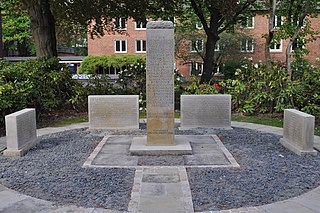
The Monument to the X-ray and Radium Martyrs of All Nations is a memorial in Hamburg, Germany, commemorating those who died due to their work with the use of radiation, particularly X-rays, in medicine. It was unveiled on the grounds of St Georg Hospital, on 4 April 1936 by the Deutsche Röntgengesellschaft.
Wikipedia: Monument to the X-ray and Radium Martyrs of All Nations (EN)
57. Café Alex
The Alsterpavillon is a striking building in Hamburg, in which there was a traditional café before the current restaurant business. The Alster Pavilion is located on Jungfernstieg on the Inner Alster.
58. Maria Grün
The church of Maria Grün, actually Sankt Mariä Assumption, in Hamburg-Blankenese is a Catholic parish church from the time of the Weimar Republic. It is located on the southeastern edge of the district at the intersection of Schenefelder Landstrasse and Elbchaussee, not far from the district border with Nienstedten on the area formerly belonging to the village of Dockenhuden. The deer park and the formerly independent Mühlenberg settlement separate the church from the Elbe.
59. Wasserturm Lohbrügge
The Sander Dickkopp is a water tower in Hamburg-Lohbrügge at Richard-Linde-Weg 21f. Its Low German name derives on the one hand from its shape and on the other hand from its location in the forest area of Sander Tannen. From the viewing platform on the roof, you can see as far as Hamburg and far into the Vier- and Marschlande on a clear day.
60. Landhaus Mahr
Landhaus Mahr is a thatched brick house at Hohenbergstedt 21 in Hamburg's Bergstedt district. It was built in 1911/1912 according to designs by the architects Hermann Distel and August Grubitz and has been a listed building since 1989. From 1982 to 2011, it was inhabited by a residential community, Wohnmodell Kritenbarg e. V. The building has been empty since 2011.
61. Dampfeisbrecher Stettin
Stettin is a steam icebreaker built by the shipyard Stettiner Oderwerke in 1933. She was ordered by the Chamber of Commerce of Stettin. The economy of the city of Stettin strongly depended on the free access of ships to and from the Baltic Sea. Therefore, icebreakers were used to keep the shipping channels free from ice during the winter.
62. Finnlandhaus
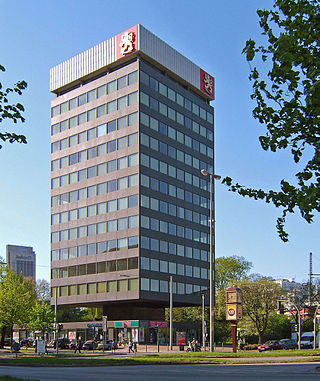
The Finland House in Hamburg is a high-rise building completed in 1966 that housed the Finnish Consulate General, among other things. The centrally arranged, narrow foot on which the building rests is striking. The golden lion on a red background, attached to the upper right corner of each side of the façade, is a simplified representation of the Finnish national coat of arms.
63. Sankt Joseph
The Roman Catholic Church and Parish of St. Joseph is located in the Hamburg district of Wandsbek. It is dedicated to Saint Joseph, husband of Mary, the Mother of God. The neo-Romanesque building is located on Witthöfftstraße, near the Wandsbek market square, opposite the Matthias-Claudius-Gymnasium.
64. Gedenkstein KZ-Außenlager
From September 1944 to February 1945, the Neugraben subcamp in Hamburg-Neugraben-Fischbek was one of the 86 subcamps of the Neuengamme concentration camp for female prisoners. De jure, however, it was located on the site of today's Hamburg-Hausbruch, as it began in 1951 at the point east of Falkenbergsweg.
65. Harburger Schloss
Harburg Castle is located on Harburg Castle Island in Harburg's inland port. It is the oldest architectural testimony of today's Hamburg district of Hamburg-Harburg. The castle is the origin of the settlement of Harburg, which later became the city of Harburg/Elbe. It was destroyed several times. Today, only a structurally modified side wing remains.
66. Gedenkort für Deserteure und andere Opfer der NS-Militärjustiz
The "Memorial for Deserters and Other Victims of Nazi Military Justice" is located on Dammtordamm in Hamburg in the vicinity of two older monuments that also address war and war victims. The 227 victims of the Wehrmacht justice system of the Second World War who are known by name in Hamburg are particularly honoured.
67. Emil Krause Schule
The Tieloh School in the street of the same name in Hamburg's Barmbek-Nord district is one of the locations of the Emil Krause School. Before the Hamburg school reform, it was a Hamburg primary, secondary and secondary school under one roof.
68. Meßberghof
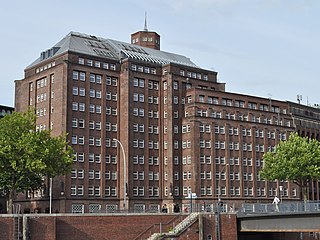
The Meßberghof – until 1938 Ballinhaus – is an office building built between 1922 and 1924 in Hamburg. The listed building is located on the Meßberg between the streets Pumpen and Willy-Brandt-Straße and has been part of the UNESCO World Heritage Site Speicherstadt and Kontorhausviertel since 2015.
69. Levantehaus
The Levantehaus is an office building in the city center of Hamburg (Hamburg-Altstadt), Mönckebergstraße 7. The name Levante refers to the first major tenant of the business premises, Deutsche Levante Schifffahrts-Linie, as well as other shipping companies based here and focused on the eastern Mediterranean. A stylized sun symbol is the registered and protected trademark of the current owner, the GbR Levantehaus.
70. Christuskirche Wandsbek
The Evangelical Lutheran Christuskirche Wandsbek is the central church of the Hamburg district of Wandsbek. It fills the east side of Wandsbek's market square and is clearly visible from the entire centre of Wandsbek, especially due to its striking tower. Today's church building is the fourth church on this site.
71. Erstes Wandsbeker Gehölz
The Wandsbeker Gehölz is a 28.3-hectare public park in the Hamburg districts of Marienthal and Wandsbek, district of Wandsbek. The approximately 2.8 kilometre long and up to 400 metre wide strip of forest is a remnant of the former Wandsbek estate grounds. The associated castle was built at the end of the 18th century by the merchant and slave trader Heinrich Carl von Schimmelmann, who also had the castle park redesigned. From 1766 to 1770, Schimmelmann laid out a pleasure garden with an avenue of lime trees here. The Lindenallee disappeared before the Second World War.
72. Internationales Maritimes Museum Hamburg
The Internationales Maritimes Museum Hamburg is a private museum in the HafenCity quarter of Hamburg, Germany. The museum houses Peter Tamm's collection of model ships, construction plans, uniforms, and maritime art, amounting to over 40,000 items and more than one million photographs. It opened in a former warehouse in 2008.
Wikipedia: Internationales Maritimes Museum Hamburg (EN), Website, Url
73. St.-Nikolai-Kirche
The Evangelical Lutheran Church of St. Nikolai, located in Hamburg-Billwerder directly on the Billdeich dike, is the newest church building on a site where churches have been mentioned in documents since the 13th century.
74. Up ewig ungedeelt
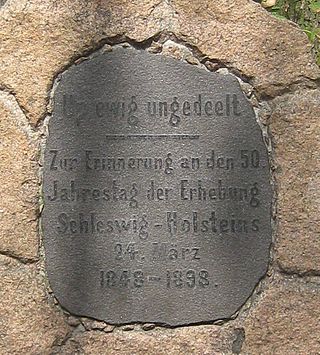
Up ewig ungedeelt is a passage of the Treaty of Ripen of 1460, in which the rule in the Duchy of Schleswig and the Duchy of Holstein was regulated. After August Wilhelm Neuber had used this saying in a poem in 1841, it became the slogan of the state law demanded by the Holstein Assembly of the Estates in 1844: "The duchies of Schleswig and Holstein are firmly connected states". Up ewig ungedeelt is the motto of the state of Schleswig-Holstein today.
75. Hamburger Haus
Scharhörn is an uninhabited island in the North Sea belonging to the city of Hamburg, Germany. The once most important daymark on the North Sea coast, the Scharhörnbake, was maintained here by the City of Hamburg from 1440 to 1979.
76. Nahverkehrsmuseum Kleinbahnhof Wohldorf
The Nahverkehrsmuseum Kleinbahnhof Wohldorf is located at the former terminus of the Alt-Rahlstedt–Volksdorf–Wohldorf electric light railway in the north of Hamburg. The museum provides information about the former Walddörfer tram and the history of public transport in Hamburg and the surrounding area. An important part of the exhibition is the model railway layout. Since 2021, the museum has been extensively renovated. The work was successfully completed in winter 2022.
Wikipedia: Nahverkehrsmuseum Kleinbahnhof Wohldorf (DE), Website
77. Bohrkopf T.R.U.D.E.
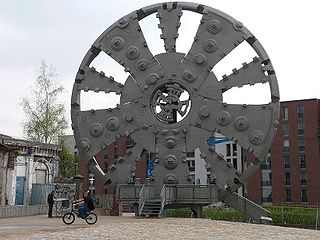
The shield boring machine TRUDE, an acronym for Deep Down Under the Elbe, was the largest tunnel boring machine in the world at the time with an outer diameter of 14.20 meters. For the extension of the new Elbe Tunnel in Hamburg, a 2560-metre-long fourth tube was drilled under the riverbed of the Elbe between October 1997 and March 2000 using the shield tunnelling method. The tunnel boring machine, which weighed over 2000 tons, removed about 400,000 cubic meters of sand, debris and stones at an average speed of 6 meters per day.
78. Bugenhagenkirche
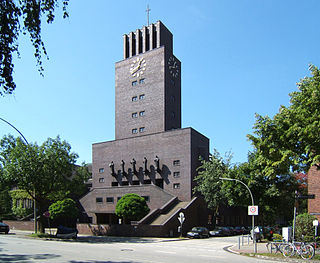
The Bugenhagen Church is a former Evangelical Lutheran church in the Barmbek-Süd district of Hamburg. It was built between 1927 and 1929 on today's Biedermannplatz according to plans by the architect Emil Heynen and restored and rebuilt by Bernhard Hirche from 1996 to 1998. In 2004, the Bugenhagen Church was closed and deconsecrated in 2019.
79. Hulbe-Haus
Das Hulbe-Haus ist ein Büro- und Geschäftshaus in Hamburg, Mönckebergstraße 21, das unter Denkmalschutz steht. Es wurde 1910/11 nach Entwürfen des Hamburger Architekten Henry Grell (1870–1937) erbaut und ist nach seinem Bauherrn benannt, dem Buchbinder und Leder-Kunsthandwerker Georg Hulbe.
80. St.-Nicolai-Kirche
St. Nicolai in Hamburg-Altengamme is one of Hamburg's eight country churches and is considered the oldest of the village churches in the Vier- and Marschlande area. It is dedicated to St. Nicholas of Myra, the patron saint of children, fishermen, sailors and merchants. Since the Reformation, which took effect in Altengamme around 1535, it has been the centre of an Evangelical Lutheran congregation.
81. Alter Friedhof Harburg
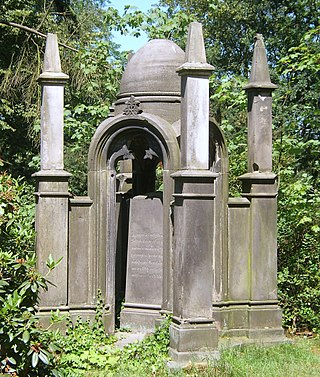
The old Harburg cemetery is a public park on a former cemetery site in Hamburg-Harburg. It is located on a hill south of St. John's Church on Bremer Straße. In the east it borders on Maretstraße with the Phoenixviertel and ends in the south at Baererstraße. From here, a footpath runs over a bridge into Harburg's city park, creating a green path connection from Harburg's city center area to the city park.
82. Mennonitengemeinde zu Hamburg und Altona
The Mennonite congregation of Hamburg and Altona has existed since 1601. The current parish church was consecrated in 1915 in Altona-Nord, earlier church buildings were located in the Große Freiheit. In addition to the Mennonite Church, the congregation in Hamburg-Bahrenfeld has its own cemetery.
Wikipedia: Mennonitengemeinde zu Hamburg und Altona (DE), Website
83. Leuchtturm Neuwerk
The Great Tower Neuwerk is the most significant building of the Neuwerk island, belonging to Hamburg. Completed in 1310, the structure is one of the oldest worldwide that was used as lighthouse (1814–2014) and still standing. This former beacon, watchtower and lighthouse is also the oldest building in Hamburg and oldest secular building on the German coast.
84. Laeiszhalle Musikhalle Hamburg
The Laeiszhalle, formerly Musikhalle, is a concert hall in the Neustadt of Hamburg, Germany and home to the Hamburger Symphoniker and the Philharmoniker Hamburg. The hall is named after the German shipowning company F. Laeisz, founder of the concert venue. The Baroque Revival Laeiszhalle was planned by the architect Martin Haller and inaugurated at its location on the Hamburg Wallring on 4 June 1908. At that time, the Musikhalle was Germany's largest and most modern concert hall.
85. Große Moorweide
The Moorweide is a public green space in the Hamburg district of Rotherbaum, north of the Dammtor train station. Originally, it was bordered by Edmund-Siemers-Allee, Moorweidenstraße, Mittelweg, Neue Rabenstraße and Alsterglacis. The part west of Rothenbaumchaussee has been built on since 1919 with the main building of the university and is no longer officially counted as moor pasture in the narrower sense. The remaining main part between Rothenbaumchaussee and Mittelweg is also known as Große Moorweide, the strip between Mittelweg and Neuer Rabenstraße as Kleine Moorweide. In total, today's park is about 4.3 hectares in size and is registered as an "important garden monument" in Hamburg's list of monuments.
86. Innocentiapark
The Innocentiapark in Hamburg is located in the west of the Harvestehude district between Brahmsallee and Parkallee in the immediate vicinity of the Grindel high-rises. The park, which covers around 4.5 hectares, is named after Pope Innocent IV. The green space was laid out in 1884 according to the English model and is sometimes referred to by the people of Hamburg as "Innopark".
87. Harburger Stadtpark
Der Harburger Stadtpark ist ein im Stil der 1920er Jahre angelegter Volkspark in den Stadtteilen Wilstorf und Marmstorf im Bezirk Hamburg-Harburg. Bei Eröffnung des Parks im Jahr 1926 gehörten die beiden Stadtteile zur Stadt Harburg. Seit 1937 gehören beide zur Stadt Hamburg. Der Park führt in einer hügeligen Waldlandschaft im Stadtteil Wilstorf rund um den Außenmühlenteich und ist seither durch Zukäufe auf insgesamt etwa 90 Hektar Grundfläche einschließlich der Wasserflächen angewachsen. Der Parkbereich südlich des Nymphenweges und westlich der Engelbek bis zum Langenbeker Weg befindet sich im Stadtteil Marmstorf.
88. Hamburger Dom
The Hamburger Dom is a large fair held at the Heiligengeistfeld fair ground in central Hamburg, Germany. With three fairs per year it is the biggest and the longest fair throughout Germany and attracts approximately ten million visitors per year. It is also referred to as a Volksfest. The Hamburger Dom is also one of the well known festivals in the Hamburg metropolitan area.
89. Thalia Theater
The Thalia Theater is one of the three state-owned theatres in Hamburg, Germany. It was founded in 1843 by Charles Maurice Schwartzenberger and named after the muse Thalia. Today, it is home to one of Germany's most famous ensembles and stages around 9 new plays per season. Current theatre manager is Joachim Lux, who in 2009/10 succeeded Ulrich Khuon.
90. Cap San Diego
MS Cap San Diego is a general cargo ship, situated as a museum ship in Hamburg, Germany. Notable for her elegant silhouette, she was the last of a series of six ships known as the White Swans of the South Atlantic, and marked the apex of German-built general cargo ships before the advent of the container ship and the decline of Germany's heavy industry.
91. Elbe 3
The lightship Elbe 3 was built in 1888 as the lightship Weser at the shipyard of Johann Lange in Vegesack. The first assignment was on the Weser position from 1889. In 1936, the ship received a four-stroke marine diesel engine. Instead of the middle mast, the ship therefore has a chimney. From 1954 to 1955 and 1956 to 1966 the ship was in service at position Bremen, and from 1966 to 1977 at position Elbe 3. The beacon consisted of three electrically operated individual fires. The decommissioning was on 23 May 1977 in Cuxhaven.
92. Erlöserkirche Borgfelde
The Church of the Redeemer in the Hamburg district of Borgfelde belongs to the Evangelical Lutheran parish of St. Georg-Borgfelde. It is the first new church building in Hamburg after the destruction of the Second World War. Today, it is mainly Christians from Ghana who celebrate their services in the Church of the Redeemer.
93. Alter Elbpark
The Old Elbe Park in Hamburg is a listed public green space between the districts of Neustadt and St. Pauli. It is part of Hamburg's historic ramparts and connects the Planten un Blomen park to the north with the Stintfang, a prominent hill above the St. Pauli Landungsbrücken. The Old Elbe Park is dominated by the Bismarck monument erected in 1906 by the sculptor Hugo Lederer. The name Alter Elbpark has also existed since 1906.
94. St.Peter

The Evangelical Lutheran Church of St. Peter is the central church of the Hamburg district of Groß Borstel. It is located on the corner of Borsteler Chaussee / Schrödersweg in the immediate vicinity of the Stavenhagenhaus. With its central location and the outstanding shape of the nave and the tower, it characterises the townscape of the district.
95. St. Johannis Neuengamme
The Evangelical Lutheran Church of St. Johannis in the Hamburg district of Neuengamme is located on the Neuengammer house dike south of the Dove Elbe and is one of the oldest surviving church buildings in Hamburg.
96. Wittenbergen Unterfeuer
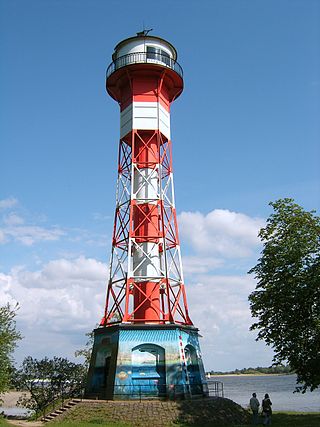
Since 1900, the Wittenbergen lighthouse, together with the Tinsdal lighthouse, has formed the Wittenbergen–Tinsdal directional light line for ships sailing downstream of the Elbe in the Hamburg district of Rissen.
97. Kirche Alt-Rahlstedt
The Alt-Rahlstedt Church, which belongs to the Nordkirche, is one of the oldest church buildings in northern Germany with works of art worth seeing. It is located in the Hamburg district of Rahlstedt, which belonged to the district of Stormarn until the Greater Hamburg Act. Under canon law, it has belonged to the church district of Hamburg-Ost since 2009, before that to the church district of Stormarn since 1977 and from 1813 to 1977 to the provost's office of Stormarn. Therefore, the church is often counted as part of Stormarn in older literature. Connections to the surrounding area of Hamburg have been preserved to this day, for example, the church of Braak is a daughter church of the church of Alt-Rahlstedt.
98. Tansania-Park
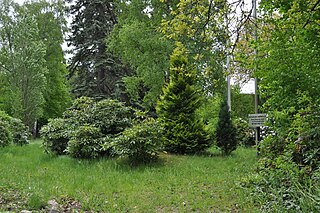
The Tanzania Park is the unofficial name of a monument complex in Hamburg-Jenfeld that presents memorials and sculptures from German colonial history. This was created in 2003 by the privately initiated Jenfeld Cultural Circle on the site of the former Lettow-Vorbeck barracks. There is a connection to this property in terms of content through the namesake of the Bundeswehr base, which was closed in 1999, Paul von Lettow-Vorbeck, commander of the Schutztruppe for German East Africa, today's Tanzania, during the First World War. Since there are already numerous military and colonial symbols on the site and on the building facades, including ceramic relief portraits of the military men Hermann von Wissmann, Paul von Lettow-Vorbeck and Lothar von Trotha, further monuments of German and especially Hamburg colonial history, some of which are in storage, were to be erected at this location.
99. Oberfeuer Tinsdal
Since 1900, the Tinsdal lighthouse has formed the Wittenbergen-Tinsdal directional light line on the Elbe in the Hamburg district of Rissen as the upper light, together with the Wittenbergen lighthouse as the lower light.
100. Domkirche Sankt Marien
Domkirche St. Marien is a Roman Catholic cathedral in Sankt Georg, Hamburg, Germany, and the metropolitan cathedral of the Roman Catholic Archdiocese of Hamburg. It was the first new Roman Catholic church built in Hamburg since the Reformation.
Share
How likely are you to recommend us?
Disclaimer Please be aware of your surroundings and do not enter private property. We are not liable for any damages that occur during the tours.
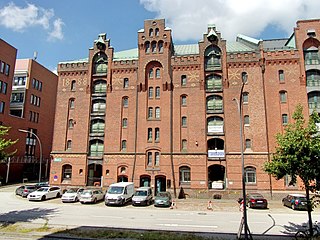
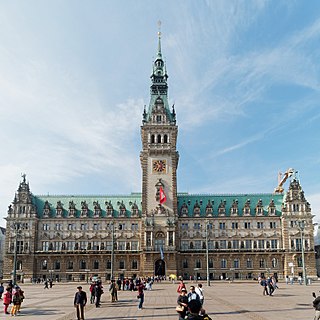
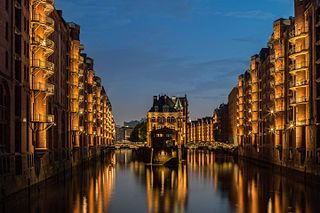
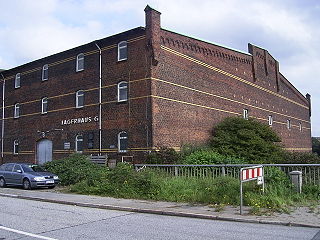
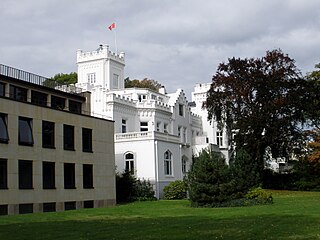
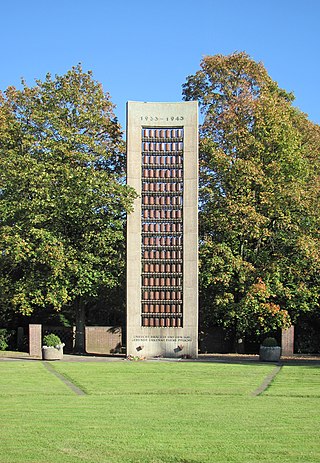
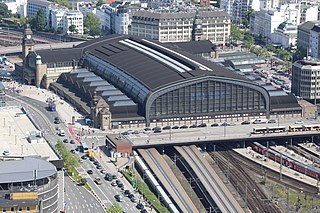
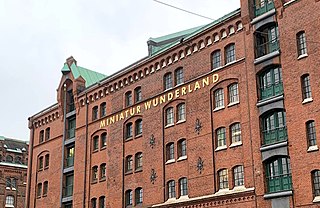
![[Hamburger Franzosenzeit]](/static/images/wikipedia/Germany_Hamburg_[Hamburger-Franzosenzeit].jpg)

